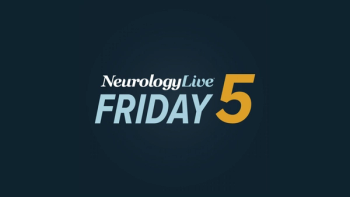
MDA and PPMD Release Consensus Guidelines for Safe and Equitable Use of Gene Therapy in Duchenne

Key Takeaways
- New guidelines for DMD gene therapy highlight the need for multidisciplinary care teams and safety monitoring protocols.
- Institutional readiness includes rapid lab access, consistent administration, and proactive payer engagement for gene therapy.
New guidelines enhance gene therapy delivery for Duchenne muscular dystrophy, emphasizing multidisciplinary care and safety monitoring for optimal patient outcomes.
Through a joint effort of clinicians, researchers, and advocacy leaders, the Muscular Dystrophy Association (MDA) and Parent Project Muscular Dystrophy (PPMD) announced the publication of new guidelines that promote the delivery and monitoring of gene therapy in patients with Duchenne muscular dystrophy (DMD).1,2
DMD is caused by mutations in the DMD gene, one of the largest in the human genome. This gene encodes dystrophin, a critical protein for stabilizing muscle fibers. To date, the FDA has approved 1 gene therapy: Sarepta’s Elevidys, an AAV vector-based therapy indicated for both ambulatory and non-ambulatory patients with DMD.
While Elevidys remains the only approved gene therapy, the published guidelines are potentially applicable to other products in clinical development. The main themes of the guidelines include the value and role of multidisciplinary care teams, protocols for monitoring and managing adverse events, and safety surveillance and transparent reporting.
"One of the most important take-home messages is that gene therapy requires an amplified version of the multidisciplinary care we already deliver in Duchenne," Barry Byrne, MD, PhD, chief medical officer of the MDA, told NeurologyLive®. "Beyond the routine involvement of neurology and cardiology, we now need hematology, nephrology, immunology, and other subspecialists engaged from the very beginning."
Byrne, who also serves as director of the Powell Gene Therapy Center at the University of Florida, added, "That’s because the adverse events we’ve observed are often immune-mediated, and only a team fully aligned on protocols and communication can both prevent and respond to these complications in real time."
The consensus guidelines emphasize institutional readiness, which includes having access to rapid labs and weekly or same-day tests and consistency across different administration sites. Per the new guidelines, institutions should have an established plan for rare complications, begin to build rapport with payers, and proactively prepare for authorization requests with documented eligibility.
In terms of patient selection, eligible patients for gene therapy should have a confirmed genetic diagnosis with updated molecular testing and a review of exclusions according to the therapy’s label. Patients must have been on high-dose corticosteroids for at least 2 months before starting treatment and must undergo weekly blood tests and routine laboratory tests for safety.
"We now recommend close weekly monitoring of liver function tests—AST [aspartate aminotransferase], ALT [alanine aminotransferase], and GGT [gamma-glutamyl transpeptidase]—following gene therapy, since subacute inflammation and endothelial injury have been seen despite routine glucocorticoid use," Byrne noted.
During the preparation stages for gene therapy, the recommended guidelines note several baseline labs, such as troponin-1, comprehensive metabolic panel, complete blood count, and liver panel, as well as cardiac evaluations and functional assessments, such as the North Star Ambulatory Assessment, performance of upper limb, and 10-meter walk/run. At this stage, patients should be informed about consent obligations and a rundown of their future care plan and what it will involve.
On the day of treatment, clinicians should be prepared to review the patient’s medical history, prep infusion sites, and monitor infusion reactions. Postinfusion observation is expected to last around 3 hours, and institutions should be equipped with discharge instructions and an emergency plan if necessary.
In the early stages following the start of gene therapy, the guidelines call for weekly lab testing of troponin, platelets, and liver function tests, followed by a corticosteroid taper that starts around 8 weeks. Safety remains the key part during this 3-month phase, as clinicians should track adverse events, including cardiac toxicity, TMA, and hepatoxicity, while adjusting electrocardiogram monitoring based on symptoms. For adjustments, the group of experts recommended following Action Network recommendations, noting that troponin elevation 3 times more than baseline warrants immediate follow-up. In addition, arrhythmia should trigger a cardiac consultation.
Past the initial 3-month stage, the guidelines call for continued tracking of gene therapy safety and efficacy through annual lab panels and ensure adverse event reporting through the FDA Adverse Event Reporting System (FAERS) and registries like ENDURE.
"The No. 1 takeaway of all this is that we have to ensure that these products are safe in order to fully realize the direct benefit they might bring to patients. That’s why establishing best practices around safety became such a central theme of the guidelines," Byrne said. "There’s growing interest in agents like rapamycin, already used in transplantation, which may enhance the safety of therapy. The hope is not only to reduce the rate of liver toxicity but also potentially increase efficacy, which could fundamentally change the risk-benefit conversation for patients and families."
READ MORE:
Liver toxicity, as Byrne noted, was the subject of recent concern for Elevidys and other Sarepta gene therapy products. In mid-July, the FDA requested that the company
At the time, the FDA revoked Sarepta’s platform technology designation and met with the company to request a voluntary halt on all Elevidys shipments. Sarepta declined to comply with the agency’s request. The reasons for revoking were insufficient evidence—especially in light of new safety concerns—that the company's AAVrh74 Platform technology can be used across multiple drugs without compromising safety.
Less than 2 weeks after the FDA shut down the distribution of Elevidys, the agency recommended removing the voluntary hold for ambulatory patients eligible for the gene therapy. At the time, the FDA’s investigation concluded that the death of the ambulatory 8-year-old boy, who was on Elevidys, was unrelated to the gene therapy product. The agency also noted it will work with Sarepta regarding nonambulatory patients, which remains subject to a voluntary hold, following 2 deaths.4
“We now know that more than a thousand boys with Duchenne have already received gene therapy, and additional products are right behind," Byrne said. "Some of the most exciting work involves gene editing approaches that could apply to at least half the Duchenne population, or near full-length dystrophin strategies that are mutation independent."
"Others aim to improve tissue targeting—enhancing muscle or cardiac delivery while lessening liver toxicity," he added. "Together, these advances suggest that patients will soon have multiple options, hopefully available at younger ages, and supported by the best safety practices outlined in these recommendations."
Byrne hopped on NeurologyLive's biweekly podcast, Mind Moments, to discuss the recommendations in further detail, giving clinicians insights on how they can apply them to clinical care. In the episode below, he covers safety of gene therapy, multidisciplinary care, and access challenges shaping future treatment approaches.
REFERENCES
1. Muscular Dystrophy Association and Parent Project Muscular Dystrophy announce joint consensus guidelines for safe and equitable delivery of gene therapy in Duchenne muscular dystrophy. News release. Muscular Dystrophy Association. August 23, 2025. https://www.mda.org/press-releases/mda-and-ppmd-announce-joint-consensus-guidelines
2. Wolff JM, Capocci N, Atas E, et al. Consensus recommendations and considerations for the delivery and monitoring of gene therapy in patients with Duchenne muscular dystrophy. Neuromuscular Disord. Published online August 23, 2025. doi:10.1016/j.nmd.2025.106208
3. FDA requests Sarepta Therapeutics suspend distribution of Elevidys and places clinical trials on hold for multiple gene therapy products following 3 deaths. News release. FDA. July 18, 2025. https://www.fda.gov/news-events/press-announcements/fda-requests-sarepta-therapeutics-suspend-distribution-elevidys-and-places-clinical-trials-hold
4. FDA recommends removal of voluntary hold for Elevidys for ambulatory patients. News release. FDA. July 28, 2025. https://www.fda.gov/news-events/press-announcements/fda-recommends-removal-voluntary-hold-elevidys-ambulatory-patients
Newsletter
Keep your finger on the pulse of neurology—subscribe to NeurologyLive for expert interviews, new data, and breakthrough treatment updates.































